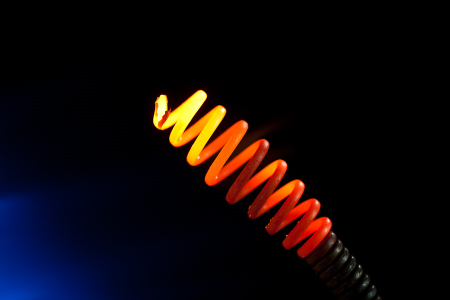Resistance
Materials have different degrees of impeding the flow of electric current depending on their type and shape. Most materials, except metals, do not conduct current well. On the other hand, metals have low resistance and allow current to flow easily. Pure copper has a very low resistance, so it is mainly used for wire. And materials like superconductors sometimes have completely zero resistance at very low temperatures.
The bulb’s filament is made of tungsten, which has some resistance. When an electric current flows, the kinetic energy of electrons accelerated by an electric field is converted into the thermal energy of atoms in the filament.
Incandescence
Iron is initially dark red when heated, but as the temperature increases, it gradually acquires a yellowish color. This phenomenon is because the light’s color changes as the material’s temperature.

When the light bulb’s filament reaches about 2,500 ~ 3,000℃, light in the visible wavelength band is emitted.
All objects absorb and emit light in a wavelength range suitable for their temperature (blackbody radiation). For example, objects at room temperature emit long-wavelength infrared light, allowing you to observe the infrared radiation emitted by people or animals (night vision cameras).